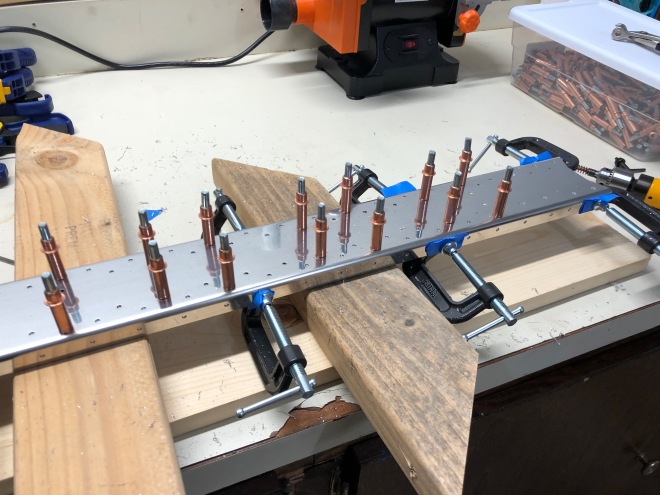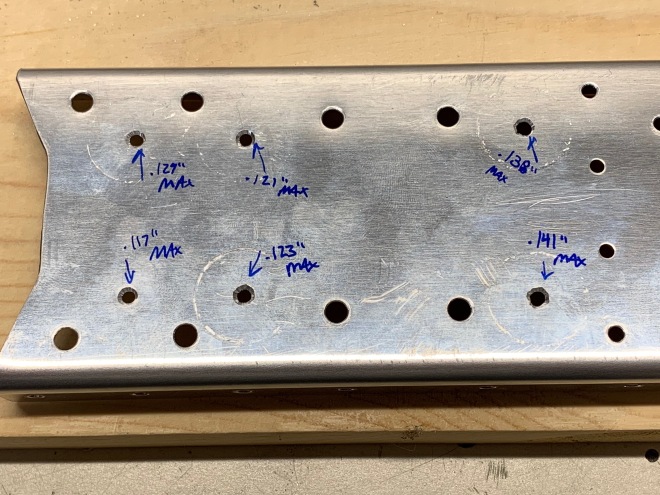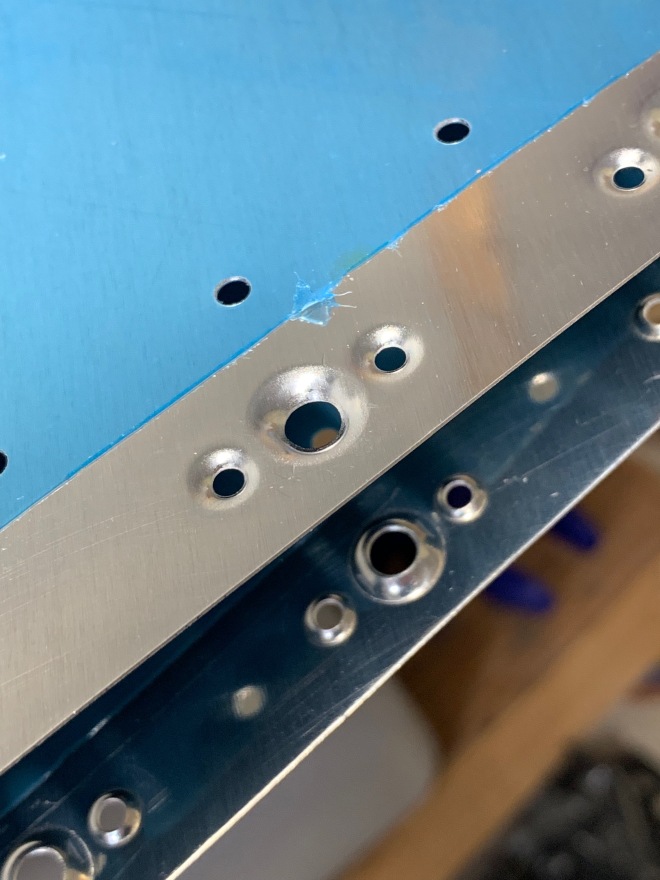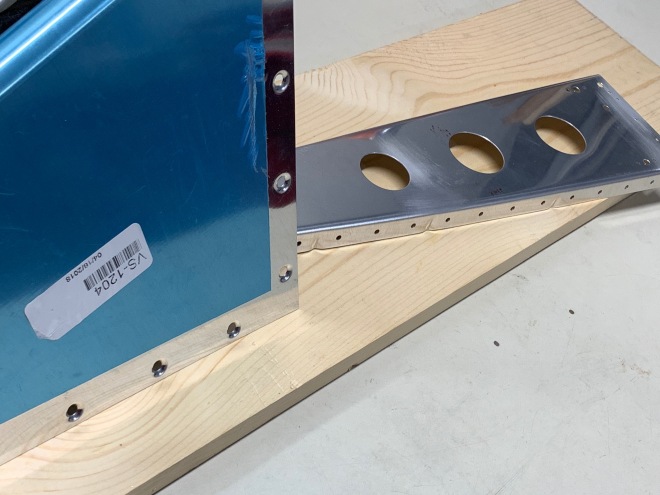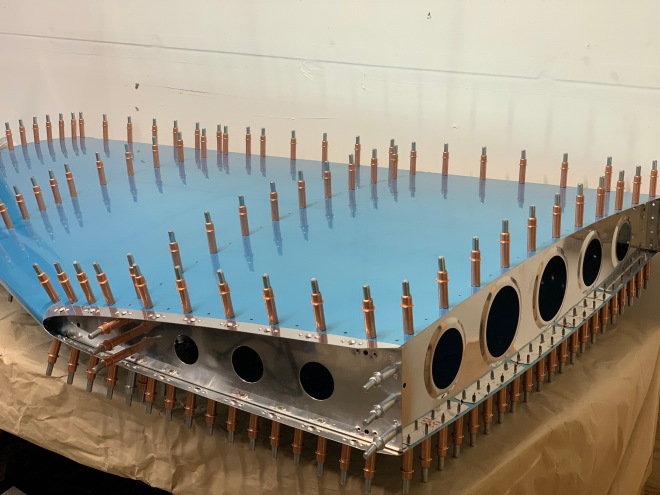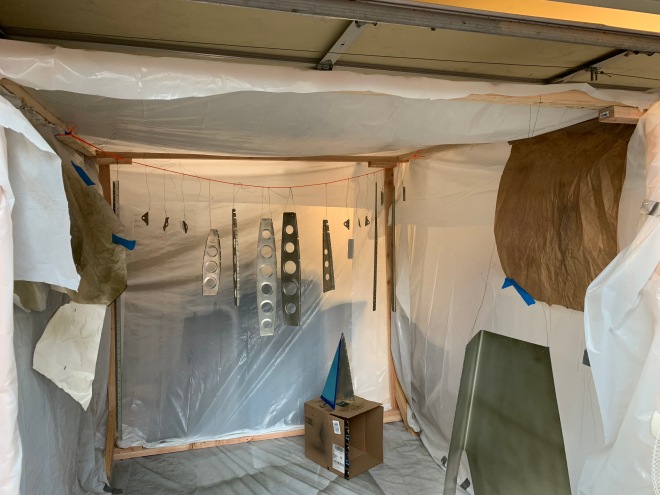This post encompasses the last 10-15 hours of final assembly in the vertical stabilizer. Minus the rudder hinge assemblies, we’ve fully completed “Section 6 – Vertical Stabilizer” in the plans.
We began final assembly of the vertical stabilizer the day after priming. As you’ll see throughout this post, the internal structure parts are covered in a thin green/gray layer of primer. Before priming, the parts were a shiny, almost mirror-like aluminum alloy covered with a layer of pure aluminum (“Alclad”). With priming complete, we actually have to step back in the assembly plans a bit and start fastening things together. Finally, we get to squeeze some rivets! First up: rudder hinge assemblies. The picture of me holding the completed bracket belies the frustration of actually squeezing those rivets by hand. The standard ATS squeezer could use a bit longer arms to increase the mechanical advantage.



Next, we fastened the parts that caused us so much trouble before: the Vertical Stabilizer Rear Spar, which has reinforcing “spar caps” and nutplates that are riveted on to accept the bolts for the rudder hinge assemblies. Below is the nutplate installation, which is slightly “floating” off the vertical spar surface (you can see the minor gaps). The gaps truly are small – and even though they aren’t fully flush with the surface, Van’s has said that <1/32” gap should be acceptable. I think all four were under .020”.
There are four ribs inside the vertical stabilizer. The lower two are attached to the forward and rear spars. You can see them attached in the photo below, where Kelsey is working to rivet the doublers onto the rear spar. A few more rivets, and we have the Vertical Stabilizer Skeleton fully assembled!

Sometimes you learn that you can screw up not just airplane parts, but the tools you’re working with too. Got some junk stuck inside of the rivet squeezer (don’t ask…), so this is me disassembling it. Having a set of various pin punches is pretty handy.
With a fully operational squeezer, it’s time to start riveting nutplates to the Main Skin. These nutplates will accept the screws that fasten the Forward Skin section to the main skin.
With the 18 nutplates installed, we can now begin preparations to rivet the main skin to the skeleton. In theory, you don’t have to cleco every hole – but I found that if there was a minor misalignment, it would probably make the final riveting a little easier.
With everything cleco’d together and the holes aligning, we can begin riveting! More than 250 rivets attach the main skin of the vertical stabilizer to the internal structure. Fortunately, they are all pull or pop-type rivets – and the Stanley ProSet XT1 rivet gun makes quick work of them. I can’t imagine doing these all by hand – and if you’re building an RV-12, I kindly would recommend you check yourself into the crazy clinic if you try save the money that you should be spending on a pneumatic rivet gun. I’m not convinced you have to buy the pricier Stanley one, but it sure is light, ergonomic, and easy to work with.
There’s nothing in the plans that technically requires you to assemble this vertically, but I would highly recommend it. Just make sure it’s not going to topple over.
Do not brandish your airplane parts about the garage to take strange pictures. Just because we did it doesn’t mean it’s a good idea. 🙂
















